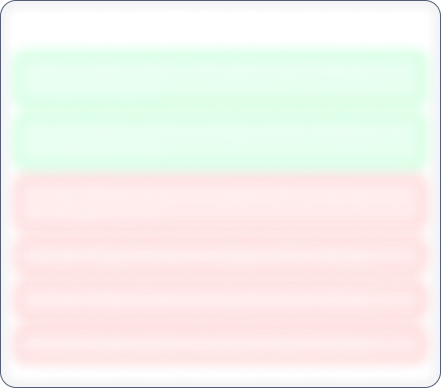Get 50% OFF This Monsoon!
Sunshield Chemicals

No Data Available
Investor Sentiment
Sunshield Chemicals Share price and Fundamental Analysis
Key Metrics
Included In
Stock Returns
Stock Heatmap

No Stocks
Smart Score

Unlock Smart Score
See Detailed Analysis & Insights


Unlock Insights
See Detailed Analysis & Insights
Technicals
Returns Calculator
If you would have investedResearch Report
No Research Report
Corporate Action
Financials
Key Ratios
ROE
Avg ROE (3 Yrs) : NaN%
ROCE
Avg ROCE (3 Yrs) : NaN%
ROA
Avg ROA (3 Yrs) : NaN%
NPM
Avg NPM (3 Yrs) : NaN%
Dividend History
5 Year FactSheet
Documents

No Data Available
News
Sunshield Chemicals Management and History
Company Management


Unlock Management Data
See Detailed Analysis & Insights
Company History
Sunshield Chemicals Limited (SCL) was incorporated as a Public Limited Company on 19 November 1986. The Company was promoted by Satish M Kelkar, C M Kelkar and Sons. The Company is presently engaged in manufacture and sale of Speciality Chemicals in the domestic and international markets. It manufactures speciality chemicals which find application in industries like agrochemicals, fertilisers, paints, textiles, petroleum, etc.
The company commenced its operations in Oct.'87 to manufacture 900 tpa of ethylene oxide condensates (EOC). The capacity was increased to 2100 tpa in Sep.'90, which was further increased to 3000 tpa in 1993 and to 4500 tpa in Sep.'94 after it took over Atsuan Chemical Corporation. It acquired Dimple Chemicals and Services situated in Ambernath in Apr.'93 to add 1680 tpa of sulphonates, esters and amides to its existing production capacity. In Sep.'94, it acquired Kamal Chemical Industries, enhancing its total capacity by another 1200 tpa of sulphonates, sulphates, esters and amides. In 1994, both Kamal Chemical Industries and Dimple Chemicals and Services were merged with the company.
Sunshield undertook a backward integration-cum-diversification to produce 3000 tpa of alkyl phenols, commercial production of which commenced in Jul.'94.
In May '95, the company offered 9.19 lac equity shares of Rs 10, at a premium of Rs 38, aggregating Rs 4.41 cr. The company's clientele includes Excel Industries, IOC, Hindustan Petroleum, India Glycols, Bayer India, BASF, Asian Paints, FACT, etc.
During the year 1995-96, the company successfully launched two new range of products viz, an antioxidant based on Nonyl Phenol and Dodecy Phenol. The company completed implementation of consolidation of production at its main manufacturing centre at Village Rasal by shifting its undertaking in the urban area at Ambernath. The company produced new products viz, Para Tertiary Butyl Phenol(PTBP) and Para Octyl Phenol(POP) and promoted an independent company 'Sunshiel Organics Ltd'(SOL) which is putting up the project to manufacture the above products with an installed capacity of 2000 tpa.
During 1996-97, the company entered into a memorandum of agreement with Schenectady International Inc. (SII), the world leaders in the manufacture of Alkly pphenols to set up a globally acceptable manufacturing facility for wide range of Alkylated Phenols as also other chemicals.
The Joint Venture between SII (USA) and the company was activated effective 11th June, 1998.
The Company is taking steps to shift the thrust of business from Alkyl Phenols and Commodity Speciality Chemicals to 'Niche Speciality Chemicals'.
During the year 1999-2000, the company launched a speciality Anti Oxidant which is marketed by a global leader for its Indian customers. It has also successfully developed a trial product for speciality process used by the Indian affiliate of a large multinational group.
In 2000-01, the Company started commercial sale of Speciality Antioxident to a well known MNC in India. It developed speciality surfactants at the Company's laboratory and pilot plant
During the year 2021-22, the Agreement for the Sale and Purchase of shares in Sunshield Chemicals Limited was executed between the Company, its erstwhile Promoters and Indus Petrochem Limited. In terms of the said Agreement, Indus Petrochem Limited on 30th November 2021 acquired 45,85,196 Equity shares of Rs. 10/- each representing 62.36% Equity Shares in the Company as per the SEBI (Substantial Acquisition of Shares and Takeovers) Regulations 2011.
Sunshield Chemicals Share Price
Sunshield Chemicals share price reflects investor sentiment toward the company and is impacted by various factors such as financial performance, market trends, and economic conditions. Share price is an indicator which shows the current value of the company's shares at which buyers or sellers can transact.
Sunshield Chemicals Market Cap
Market capitalization of Sunshield Chemicals indicates the total value of its outstanding shares. Marketcap is calculated by multiplying share price and outstanding shares of the company. It is a helpful metric for assessing the company's size and market Valuation. It also helps investors understand how Sunshield Chemicals is valued compared to its competitors.
Sunshield Chemicals PE Ratio
Sunshield Chemicals PE ratio helps investors understand what is the market value of each stock compared to Sunshield Chemicals 's earnings. A PE ratio higher than the average industry PE could indicate an overvaluation of the stock, whereas a lower PE compared to the average industry PE could indicate an undervaluation.
Sunshield Chemicals PEG Ratio
The PEG ratio of Sunshield Chemicals evaluates its PE ratio in relation to its growth rate. A PEG ratio of 1 indicates a fair value, a PEG ratio of less than 1 indicates undervaluation, and a PEG ratio of more than 1 indicates overvaluation.
Sunshield Chemicals ROE (Return on Equity)
Return on Equity (ROE) measures how effectively Sunshield Chemicals generates profit from shareholders' equity. A higher ROE of more than 20% indicates better financial performance in terms of profitability.
Sunshield Chemicals ROCE (Return on Capital Employed)
Return on Capital Employed (ROCE) evaluates the profitability of Sunshield Chemicals in relation to its capital employed. In simple terms, ROCE provides insight to investors as to how well the company is utilizing the capital deployed. A high ROCE of more than 20% shows that the business is making profitable use of its capital.
Sunshield Chemicals Total Debt
Total debt of Sunshield Chemicals shows how much the company owes to either banks or individual creditors. In simple terms, this is the amount the company has to repay. Total debt can be a very useful metric to show the financial health of the company. Total debt more than equity is considered to be a bad sign.
Sunshield Chemicals Debt to Equity Ratio
The Debt-to-Equity (DE) ratio of Sunshield Chemicals compares its total debt to shareholders' equity. A higher Debt to Equity ratio could indicate higher financial risk, while a lower ratio suggests that the company is managing its debt efficiently.
Sunshield Chemicals CAGR (Compound Annual Growth Rate)
CAGR shows the consistent growth rate of Sunshield Chemicals over a specific period, whether it is over a month, a year, or 10 years. It is a key metric to evaluate the company’s long-term growth potential. Main metrics for which CAGR is calculated are net sales, net profit, operating profit, and stock returns.
Sunshield Chemicals Technical Analysis
Technical analysis of Sunshield Chemicals helps investors get an insight into when they can enter or exit the stock. Key components of Sunshield Chemicals Technical Analysis include:
Support Levels (S1, S2, S3)
There are usually multiple support levels, but the main support levels for a stock are S1, S2, S3. Support levels indicate price points where stock might get support from buyers, helping the stock stop falling and rise.
Resistance Levels (R1, R2, R3)
There are usually multiple resistance levels, but the main resistance levels for a stock are R1, R2, R3. Resistance levels represent price points where Sunshield Chemicals shares often struggle to rise above due to selling pressure.
Sunshield Chemicals Dividends
Dividends refer to the portion of the company’s profits distributed to its shareholders. Dividends are typically paid out in cash and reflect Sunshield Chemicals ’s financial health and profitability.
Sunshield Chemicals Bonus Shares
Bonus shares are usually given by companies to make the stock more affordable, increase liquidity, boost investor confidence, and more.
Sunshield Chemicals Stock Split
Stock split increases the number of its outstanding shares by dividing each existing share into multiple shares. When the company offers a stock split, the face value of the stock reduces in the same proportion as the split ratio.
Sunshield Chemicals Financials
The financials of Sunshield Chemicals provide a complete view to investors about its net sales, net profit, operating profits, expenses, and overall financial health. Investors can analyze financial data to assess the company’s stability and also understand how the company has been growing financially.
Sunshield Chemicals Profit and Loss Statements
The profit and loss statement of Sunshield Chemicals highlights its net sales, net profit, total expenditure, and operating profits in the current financial year. This Profit and Loss statement is crucial for evaluating the profitability and financial stability of Sunshield Chemicals .
Sunshield Chemicals Balance Sheet
The balance sheet presents a snapshot of Sunshield Chemicals ’s assets, liabilities, and equity of shareholders, providing insights into the financials of the company.
Sunshield Chemicals Cashflow Statements
Cashflow statements track the company's cash inflows and outflows over a period. It is an essential tool for understanding how well the company manages its liquidity and finances.


